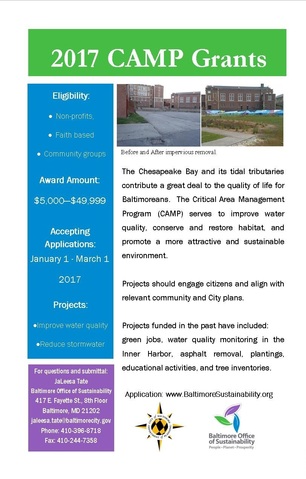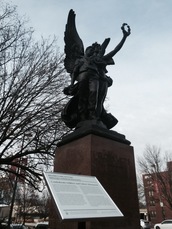|
The
approval of Baltimore City’s new zoning code on December 5, 2016 is a major accomplishment
for the Department of Planning, City Council and the City of Baltimore as a
whole. The new zoning code represents the first comprehensive update since
1971. Since then, the code became increasingly antiquated with time – it
supported the separation of land uses and automobile oriented development, and maintained zoning district categories that bore little relation to the actual uses on the ground.
Countless
hours of work went into developing the new zoning legislation, with the goal of ensuring
that the City’s new code is predictable, understandable and enforceable. The
zoning code is designed to implement the vision outlined in the City’s
Comprehensive Master Plan and Sustainability Plan. The Department of Planning
began a process to rewrite the code in 2008, working with a Zoning Advisory
Committee made up of community members, developers and stakeholders from other
agencies. Dozens of citywide meetings were organized to discuss the proposed
code.
The
new code takes a different, more flexible, approach – paving the way for
mixed-use development like biotech parks and more walkable residential
neighborhoods.
Some
of the changes to the new zoning code include:
-
The new Industrial Mixed Use District
(IMU) allows for the conversion of multi-story industrial buildings into artist
live-work spaces, offices, galleries, retail or limited residential alongside
light industrial uses.
-
The code implements and promotes many
sustainability principles such as community gardens, urban agriculture, bicycle
parking and walkability.
-
The creation of Zoning Districts for
Educational and Hospital Campuses, allowing a Campus Master Plan. This allows
greater flexibility and a more streamlined development process.
The
draft zoning code was converted into an ordinance by the City’s legislative
staff and was then introduced by the City Council at the Mayor’s request in
October 2012. In all, City Council considered more than 800 amendments to the
code. Ultimately, City Council gave preliminary approval to the new zoning code
in October 2016 and final approval in December. The zoning code will take effect on June 5, 2017, giving agencies six months transition time for full implementation.
The
new code is simplified and better organized. More resources to help applicants and residents
navigate the new code will be posted on the Department of Planning’s website,
and staff is available and ready to answer any questions.
The
New Zoning Code can be viewed here. This link includes text and maps. A Frequently Asked Questions (FAQ) document has been prepared and is also available here. Community members are encouraged to send questions about the new code to zoningcode@baltimorecity.gov. The Department of Planning will use these questions to update the FAQ over time.
The Department of Planning wishes to express its sincere gratitude to all of the stakeholders who attended meetings, expressed opinions, wrote proposals and worked in collaboration with staff and City officials to achieve this important milestone for Baltimore.
The Office of Sustainability is pleased to announce
the 2017 Critical Area Management Program (CAMP) Offset Grant application is
now available. The City of Baltimore accepts proposals from non-profit organizations wishing to access CAMP Offset funds.
The City has a set of guidelines for development within 1,000 feet of the City's shoreline. If on-site
mitigation is not possible,
developers may be allowed to pay into the CAMP Offset Fee Fund, managed
by the Department of Planning.
This application is
released on an annual basis to encourage existing and prospective grantees to
come up with exciting ideas for CAMP-funded projects that will improve quality
of life and the quality of our waterways in Baltimore. Any community
group, non-profit, faith-based organization, or other non-profit institution
may apply. The application may be found by clicking on the image below:


Planning staff in the Historical and Architectural
Division, working with the Department of Transportation and the Baltimore
National Heritage Area, recently installed four new signs next to the Confederate
Soldiers and Sailors Monument, Confederate Women’s Monument, Lee Jackson
Monument, and the Roger B. Taney Monument. The purpose of the new signs is to interpret the historical context of the monuments, per recommendations of the Special Commission to Review Baltimore's Public Confederate Monuments.
The Commission's report was released in September 2016, and may be accessed at: http://CHAP.Baltimorecity.gov/.
|